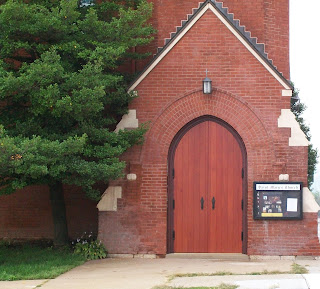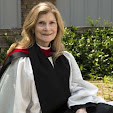Yesterday in the space of a couple of hours I was stopped in my tracks
by two references to the liturgy for Advent 4: a collect that begins “God of
impossible love, you needed Mary to give consent, to bear the scandal, to carry
your word within herself. . . “ and an essay imagining Mary and Joseph
preparing to go to Bethlehem. Mary, whom the essay’s author envisions as a
“force to be reckoned with” replies to Joseph’s proposal to find a donkey for
her to ride with some version of “aw hell no.” In this author’s imagination,
she powerwalks to Bethlehem, indulging Joseph’s slow pace with an occasional
breather on their trek to bring the savior of the world into the world. Atta
girl, Mary.
Regardless of whatever kudos male admirers accord Mary, our tradition’s
best known icon of the feminine is something no real woman can ever be. The
backstory of Jesus’ miraculous conception has a lot in common with those of
other luminaries of the ancient world. The church might have let it go at that
and forgotten it long ago like we have other culturally bound aspects of
biblical literature, but we really took this one and ran with it.
If the queen of heaven motif has gone out of style, we’ve filled in the gap with the brave unwed tiger mother who risks her life and reputation to bear this child. This portrayal seeks to arouse our emotions, bringing to mind the single mothers of our own time and place who endure poverty and shame as they struggle to care for their children. It seeks also to distract our attention from the gilded cage the church has built around Mary for two millennia.
How many times have you heard a preacher tell you the world changed
because Mary “said yes?” The church’s emphasis on Mary’s purity, its obsession
over her intact body and its glorification of her tractability has made me
uneasy for as long as I can remember. Last December, the annunciation story
felt especially strange in the wake of a shocking rise of misogyny enacted
legislatively, electorally and in popular culture. Little did any of us know at
that time what the autumn of 2017 would bring.
Consent is on everyone’s mind right now, maybe enough so to give an
effusive preacher pause before making grand claims about Mary “saying yes.” As
I read the text of Luke 1.26-38, I don’t see a request to which a woman might
reply in the affirmative. There is a declaration of events that will take
place, Mary’s request for an explanation and her reply (in translation), “let
it be with me as you have described it.” It isn’t no, but it feels more like
acquiescence than affirmation.
I’ve heard the annunciation story interpreted as a prophetic call
narrative and it’s an interesting idea. But male prophets are called to do very
different things: lead unruly nations through the wilderness to the promised
land, convert indolent or wicked cities to righteousness, and keep fractious
kings on the straight and narrow. What is asked of Mary is of a different order
of intimacy and sacrifice. Or at least it would be if she were envisioned as a
more fully realized woman. The Neverland of maternal virginity that she
inhabits held meaning for the ancients but seems either to baffle us or tempt
us to concoct a story for her that lies well beyond the boundaries of the text.
I don't intend to argue over the morality of the author of this story or that of his characters from the viewpoint of the 21st century. To do so is as incongruous as introducing into it the pathos of the poor unwed mother. This is a cosmic narrative that deserves better than to be tamed with relatable imagery and illustration. At its center is a the character of a woman created by men whom the church has confined in an incompletely realized state, suitable for adoration and admonition, but unattainable by any real woman. How often has the church similarly confined women in real life? Trumpeting about Mary’s “yes” or inventing a wonder woman personality for her isn’t going to fix that.
I don't intend to argue over the morality of the author of this story or that of his characters from the viewpoint of the 21st century. To do so is as incongruous as introducing into it the pathos of the poor unwed mother. This is a cosmic narrative that deserves better than to be tamed with relatable imagery and illustration. At its center is a the character of a woman created by men whom the church has confined in an incompletely realized state, suitable for adoration and admonition, but unattainable by any real woman. How often has the church similarly confined women in real life? Trumpeting about Mary’s “yes” or inventing a wonder woman personality for her isn’t going to fix that.
From annunciation to resurrection, Jesus’ story is a challenge to the
violence, and greed of empire. It is grounded in the culture of the ancient
world, but it speaks to us clearly across the millennia if we care to listen. Mary
shows us the way. Although God’s intent as declared by the messenger leaves her
little room to assert an opinion, her
response could be seen as her way of living the change to which this story
points. Mary claims an agency that neither the narrative nor the tradition that
followed it accords her, her author’s portrayal of her as slave and handmaiden
notwithstanding. If we’re willing to listen, she tells us what this story
really means, beating down oppression in the words of Magnificat.




